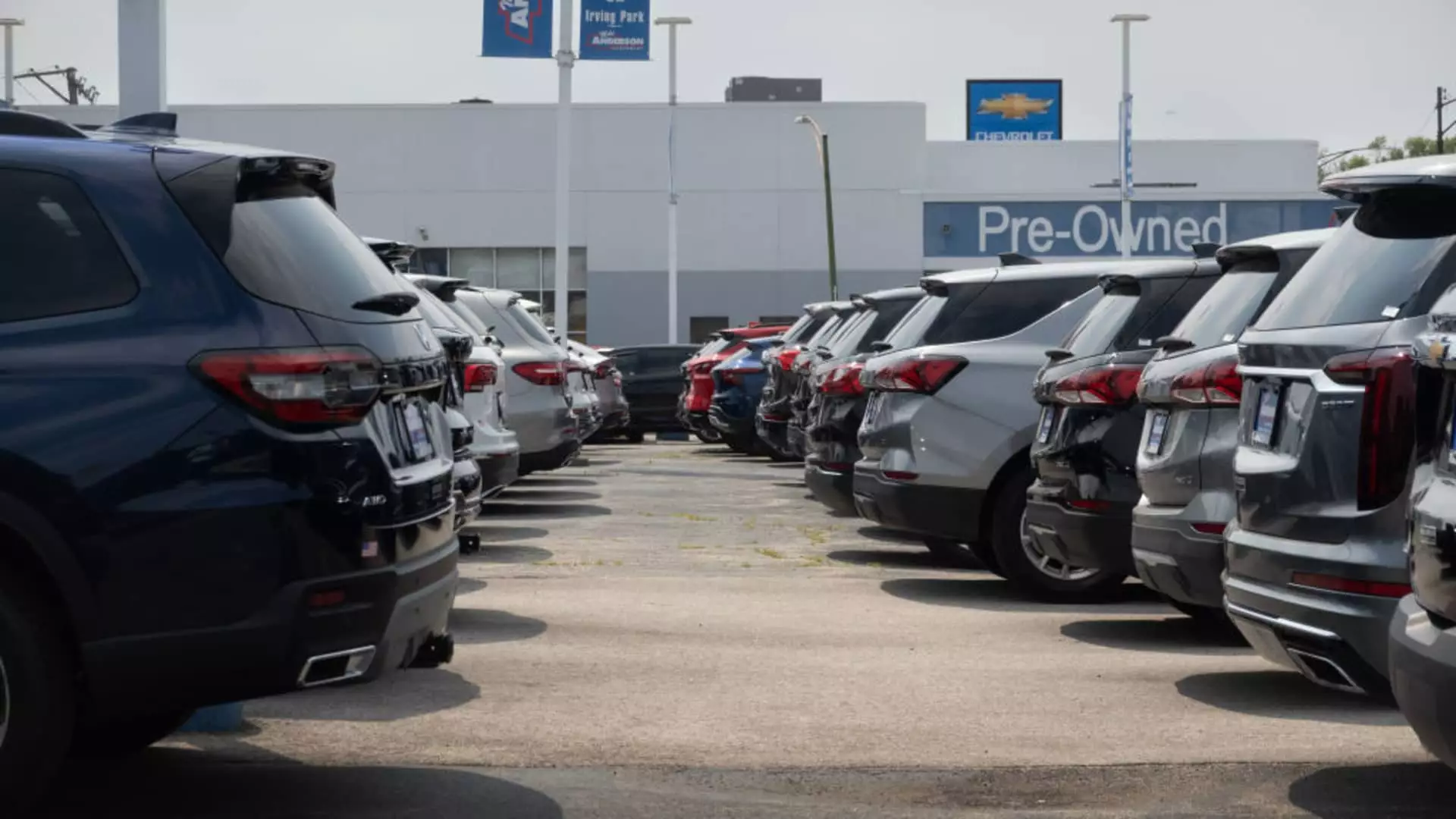As the landscape of auto financing evolves, alarming trends are emerging in the realm of consumer debt. According to recent data from Edmunds.com, an increasing segment of American car owners is grappling with the burden of auto loans that exceed the actual value of their vehicles. The average negative equity on these loans soared to a record $6,458 in the third quarter of the year, a startling rise from $5,808 the previous year. This unrelenting trend underscores the financial pressures facing American households and raises significant concerns regarding economic stability.
The implications of these rising figures are sobering. While owing a modest amount more than a vehicle’s worth might not spell disaster for every consumer, the magnitude of the issue becomes compelling when one considers that over 20% of those with auto loans are trapped in these precarious situations. Alarmingly, a significant percentage—7.5%—find themselves owing over $15,000 more than the value of their cars. Such high levels of negative equity indicate a disturbing trend towards financial strain, exacerbated last month by the Federal Reserve’s report indicating that car loan delinquency rates have surged past pre-pandemic levels.
This crisis can be linked to multiple factors, most notably the purchasing decisions made during 2021 and 2022 when demand surged, and inventory shortages plagued the auto market. Consumers, often desperate for new vehicles during a period of limited supply, frequently paid inflated prices. These inflated valuations, wed with rapid depreciation rates as market conditions began to stabilize, left many buyers facing significant financial shortfalls.
As the situation continues to unfold, it becomes evident that consumers need to adopt a more strategic approach to auto ownership. One potential solution for alleviating negative equity is extending the duration of vehicle ownership. By maintaining ownership longer and ensuring that appropriate maintenance is performed, owners can work to stabilize their vehicle’s value over time, ultimately mitigating losses.
Experts urge consumers to re-evaluate their financing strategies, particularly given the rise in car prices and interest rates. Ivan Drury, director of insights at Edmunds, warns that committing to lengthy seven-year auto loans can be particularly hazardous for individuals who are not inclined to keep their vehicles long-term. Such financial commitments can inadvertently lead to deeper financial woes.
Ultimately, the auto loan market is reflective of broader economic developments, and consumers must remain vigilant and informed. As the data illustrates an unsettling shift towards upside-down loans, it is critical for people to prioritize responsible financial planning. With careful consideration of current market conditions, buyers can mitigate risks and avoid becoming further entangled in the cycle of negative equity. As the auto industry navigates the complexities of recovery from recent disruptions, consumers must also adapt their expectations and financial habits to safeguard their economic wellbeing.

